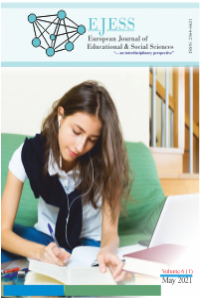Similarities and influences: Albanian and English literature
Similarities and influences: Albanian and English literature
comparative, English literature, Albanian literature monographic,
___
- Durham. Edith, BURDEN OF THE BALKANS and other works about Albania and Albanians, Publishing House “Naum Veqilharxhi”, Tirana 1998
- Kadare. Ismail, INVITATION TO THE STUDIO, “Naim Frashëri”, Tirana 1990
- Kadare. I, HAMLET, THE TOUGH PRINCE, Onufri, Tirana 2006
- Karjagdiu. Abdullah, BYRON AMONG ALBANIANS, doctoral Dissertation, Manuscript in the National and University Library of Kosovo. Page 9. Signature of Karjagdiu’s voice
- Qosja. Rexhep, HISTORY OF ALBANIAN LITERATURE, Romanticism I. “Rilindja”, Prishtina 1990
- Shakespeare. William, MACBETH, “Rilindja”, Prishtina 1968
- HISTORY OF ALBANIAN LITERATURE by ROBERT ELSIE, Social Science Monographs, Boulder. Distributed by Columbia University Press, New york 1995
- THE ANGRY CLOUD – AND ANTHOLOGY OF ALBANIAN STORIES FROM YUGOSLAVIA, TRANSLATED FROM THE ALBANIAN BY JOHN HODGSON, Prishtina 1991
- Yayın Aralığı: Yılda 2 Sayı
- Başlangıç: 2016
- Yayıncı: Ali KORKUT
High-Stakes Test Impact on Student Motivation to Learn
DUAL TRAINING AND CORONAVIRUS. A RESEARCH IN THE LIGHT OF DIGITAL EDUCATION EXPERIENCE
Anita VARGA, Krisztina LÁSZLÓNÉ KENYERES, Bence RÉTİ, Orsolya FALUS
Similarities and influences: Albanian and English literature
A Contemporary Management Practice: Mindfulness in The Work Settings
Fatma YEŞİLKUŞ, Onur Başar ÖZBOZKURT
NARSİSTİK VE HAZCI TÜKETİM KALIPLARIYLA GELEN HUZURSUZLUK VE DİĞERKÂMLIĞIN YİTİMİ ÜZERİNE
Analysis of Students' Cognitive Dimension on Digestion Process
ARBITRATION AND THE IMPORTANCE OF THE ARBITRATION AGREEMENT
Kastriote VLAHNA, Drita KRASNIQI, Bletrona KRASNIQI, Dafina VLAHNA
Türkiye'de Paranın Aktarım Mekanizmaları
Mete Ünal GİRGEN, Derya TİMUCİN
OKUL VE AİLE İLETİŞİMİ OKUL ÖNCESİ EĞİTİM VE EBEVEYN İLİŞKİLERİ ÖRNEKLEMİ
